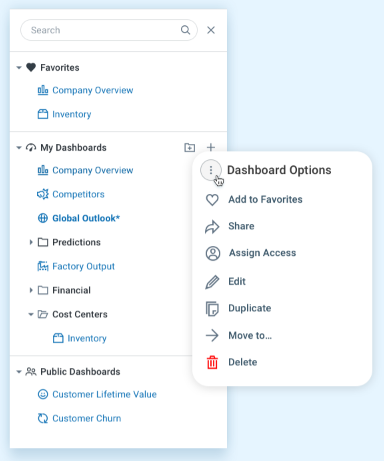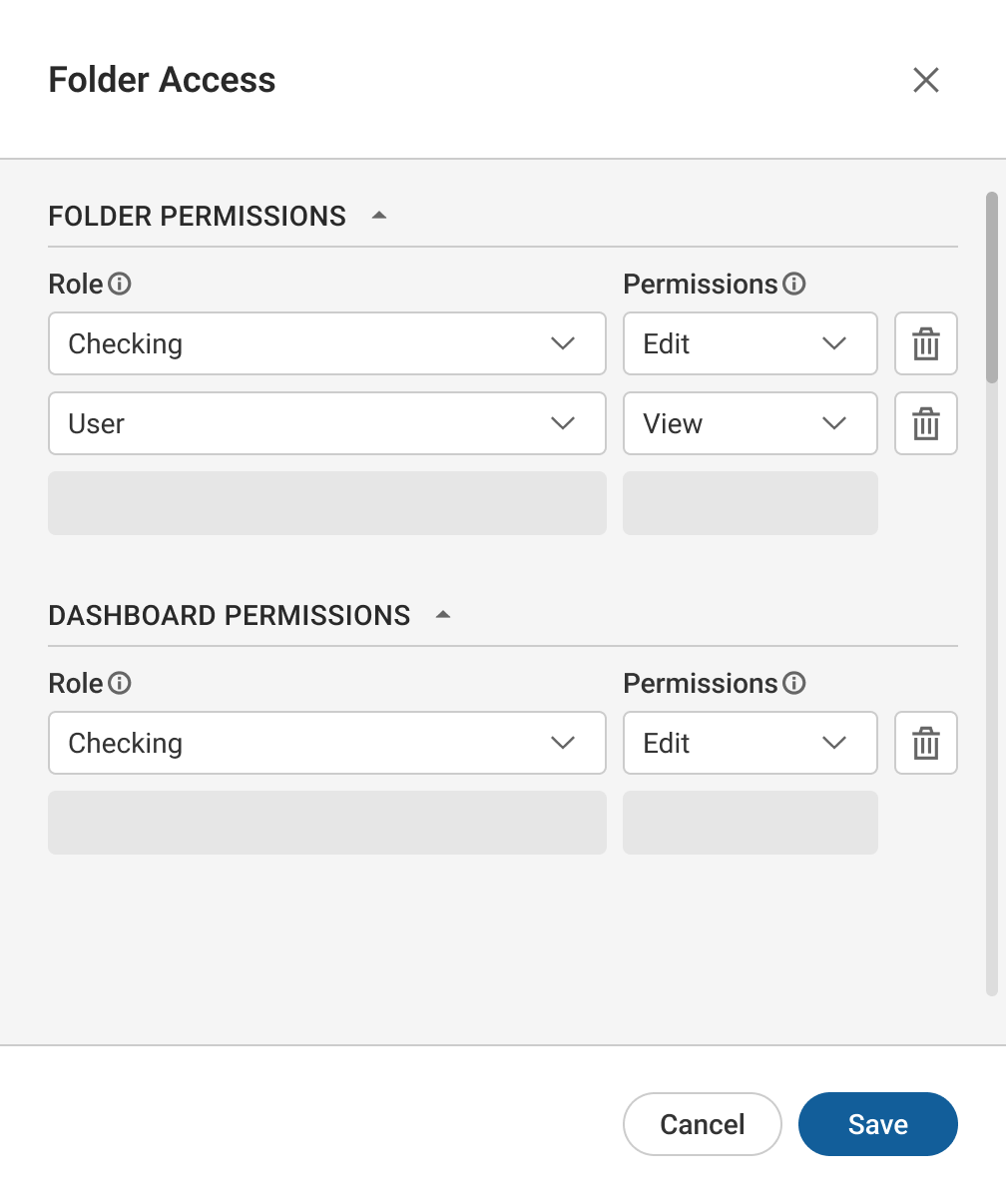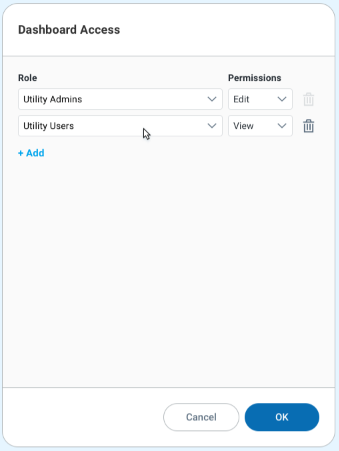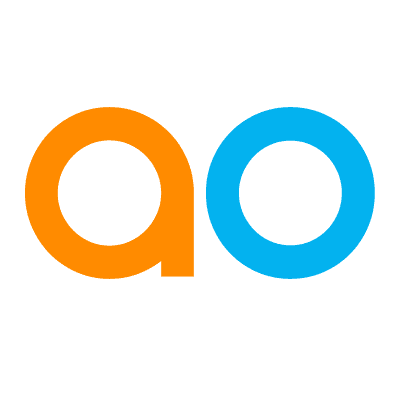Assign Access
Intended audience: END-USERS DEVELOPERS
AO Easy Answers: 4.2
Overview
The Easy Answers' Assign Access for public dashboards option is available at two different levels: folder level and individual dashboard level.
Assigning access starts with the user moving a dashboard to the public dashboard section in the dashboard panel. Without doing anything further, all other users will now be able to open/view the dashboard, ie default access is View only. If, however, some users are required to be able to Edit and/or Delete a public dashboard, it’s required that such permissions are configured for either the folder containing the dashboards or for individual dashboards directly. Permissions can only be assigned to users belonging to a given Role.

Access Permissions for Public Folders
When the Assign Access option is selected for a Folder, a dialog opens allowing the user to assign access permissions for user Roles.
A Folder can have access permissions that govern the Dashboards in the Folder. However, such access permissions will only be effective if there are no configured access permissions directly for a Dashboard. Access permissions for a Dashboard will always have priority over access permissions set for the parent Folder.
For each Role there are three types of permissions relating to both Folder and Dashboard Permissions. The current user can never assign permissions to a Public Folder or Dashboard higher than what his own Role gives permissions to:
View - a Public Folder with View permissions for a Role allows users associated with that Role to View Dashboards in the Folder.
Edit - a Public Folder with Edit permissions for a Role allows users associated with that Role to Edit (and View) Dashboards in the Folder (eg. rename, customize, add/remove apps, sections, etc…).
Delete - a Public Folder with Delete permissions for a Role allows users associated with that Role to Delete (Edit, and View) Dashboards in the Folder.

Access Permissions for Public Dashboards
When the Assign Access option is selected for a Dashboard, a dialog opens allowing the user to assign access permissions for user Roles.
For each Role, there are two types of permissions:
View - a Public Dashboard with View permissions for a Role allows users associated with that Role to only View the Dashboards.
Edit - a Public Dashboard with Edit permissions for a Role allows users associated with that Role to Edit (and View) the Dashboard (eg. rename, customize, add/remove apps, sections, etc…).
Delete - a Public Dashboard with Delete permissions for a Role allows users associated with that Role to Delete (Edit, and View) the Dashboard.
If the user moves a Dashboard out of the Public Dashboards section, any assigned Role permissions will be removed.

